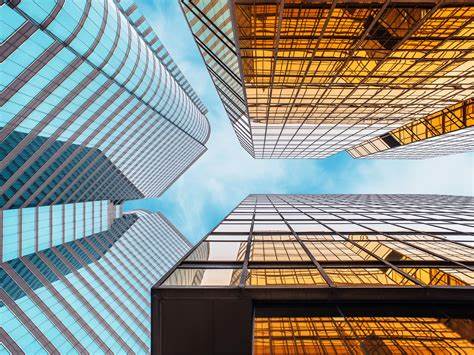How to choose Low-e glass?
LOW-E glass, also known as low-emissivity glass, is a kind of energy-saving glass. Because of its superior energy-saving and colorful colors, it has become a beautiful landscape in public buildings and high-end residential buildings. Common LOW-E glass colors are blue, gray, colorless, etc.
There are several reasons for using glass as a curtain wall: natural light, lower energy consumption, and beautiful appearance. The color of glass is like a person’s clothes. The right color can be shined at one moment, while inappropriate color can make people uncomfortable.
So how do we choose the right color? The following discusses these four aspects: light transmittance, outdoor reflection color and transmission color, and the effect of different original films and glass structure on color.
1. Appropriate light transmittance
Building use (such as housing needs better daylighting), owner’s preferences, local solar radiation factors, and national mandatory regulations “Code for Energy-saving Design of Public Buildings” GB50189-2015, implicit regulations “Code for Energy-saving Design of Public Buildings” GB50189- 2015, “Design Standard for Energy Efficiency of Residential Buildings in Severe Cold and Cold Areas” JGJ26-2010, “Design Standard for Energy Efficiency of Residential Buildings in Hot Summer and Cold Winter Areas” JGJ134-2010, “Design Standard for Energy Efficiency of Residential Buildings in Hot Summer and Warm Winter Areas” JGJ 75-2012 and Local energy-saving standards and so on.
2. Appropriate outdoor color
1) Appropriate outdoor reflectance:
① 10%-15%: It is called low-reflective glass. The low-reflective glass color is less irritating to human eyes, and the color is lighter, and it does not give people very vivid color characteristics;
② 15%-25%: It is called middle-reflection. The color of middle-reflection glass is the best, and it is easy to highlight the color of the film.
③25%-30%: It is called high reflection. High reflection glass has a strong reflectivity and is very irritating to the pupils of human eyes. The pupils will shrink adaptively to reduce the amount of light incident. Therefore, look at glass with high reflectivity. The color will be distorted to a certain extent, and the color looks like a piece of white. This color is generally called silver, such as silver white and silver blue.
2) Appropriate color value:
Traditional banking, finance, and high-end consumer places need to create a magnificent feeling. Pure color and high-reflectivity gold glass can set off a good atmosphere.
For libraries, exhibition halls and other projects, high-transmittance and low-reflection colorless glass, which has no visual obstacles and no sense of restraint, can provide people with a relaxed reading environment.
Museums, martyrs’ cemeteries and other commemorative public construction projects need to give people a sense of solemnity, middle-reflection anti-gray glass is a good choice then.
3. Through color, the influence of film surface color
4. The effect of different original films and glass structure on color
When selecting the color with low-e glass structure 6+ 12A + 6, but the original sheet and the structure have changed. After installed, the color of the glass and the selection of the sample may be corroded due to the reasons following:
1) Ultra-white glass: Because the iron ions in the glass are removed, the color will not show green. The color of conventional hollow LOW-E glass is adjusted based on ordinary white glass, and will have a 6+12A+6 structures. The white glass is adjusted to a more suitable color. If the film is coated on the ultra-white substrate, some colors may have a certain degree of redness. The thicker the glass, the greater the color difference between normal white and ultra-white.
2) Thicker glass: The thicker the glass, the greener the glass. The thickness of the single piece of insulating glass increases. The use of laminated insulating glass makes the color greener.
3) Colored glass. Common colored glass includes green wave, gray glass, tea glass, etc. These original films are heavy in color, and the color of the original film after coating will cover the color of the film. The main function of the film is heat Performance.

Therefore, when choosing LOW-E glass, not only the color of the standard structure matters, but also the glass substrate and structure must be considered comprehensively.
Saida Glass is a recognized global glass deep processing supplier of high quality, competitive price and punctual delivery time. With customizing glass in a wide variety of areas and specializing in touch panel glass, switch glass panel, AG/AR/AF/ITO/FTO/Low-e glass for indoor & outdoor touch screen.